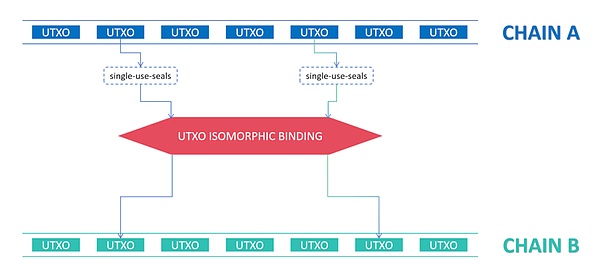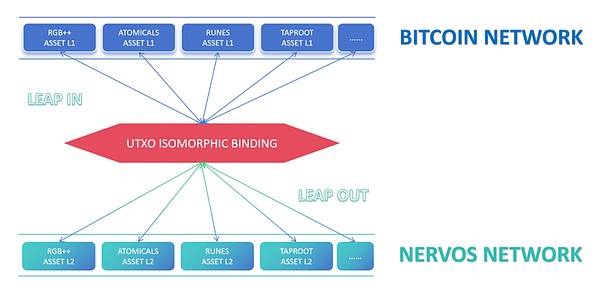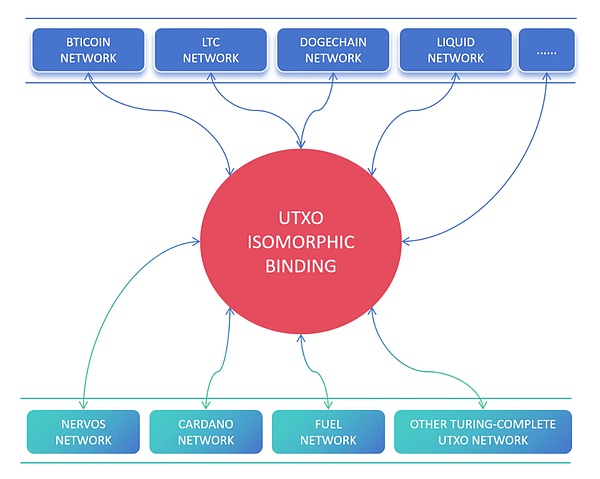Author: DaPangDun Source: X, @DaPangDunCrypto
“UTXO isomorphic binding technology” is what I think is a very important innovation in this round of BTC ecological development. I have repeatedly stated the importance and innovation of this technology. However, I found that many people still do not understand the significance of this technology. There are problems with technical cognition and ideological issues. Therefore, I wrote this article to specifically explain my cognitive context and judgment on this technology.
1.The necessity of BTC expansion
Let us first think about this question: Why does BTC need to expand?
This question involves the core issue of - the necessity of BTC network expansion. If it is not necessary, then the entire ecosystem is actually a false proposition.
We can explain this problem from many aspects, such as:
1) During the halving cycle of BTC, miners' income has declined, and more on-chain activities are needed to increase income and maintain network security, and more on-chain activities require the expansion of the ecosystem to promote;
2) The TPS of the BTC network is very low and cannot meet the needs of many scenarios. There needs to be a way to expand and make the network more powerful;
3) The network fee of BTC is very expensive, which is not convenient for large-scale popularization, especially as the price of BTC rises, the distance between it and ordinary people is getting farther and farther, which will deviate from the original intention;
4) The operation codes that the BTC network can provide are very limited, and only a very small number of function definitions or combined operations can be realized. In addition, the scripting language is non-Turing complete, and it is extremely difficult to implement smart contracts. Therefore, a method is needed to give it such characteristics;
2) The idea of the Lightning Network is to use logical algorithms to achieve a secure and fast interaction off-chain, and to realize the possibility of large-scale popularization of payments;
3) The idea of client verification is to use one-time sealing technology and off-chain technology to put data off-chain for calculation, so that it has the ability of main network security inheritance and smart contract at the same time;
4) The idea of inscriptions is to perform limited processing based on UTXO, realize the function of issuing assets, and realize other enhanced functions according to the situation;
5) Most of the ideas for compatibility with EVM are to use alienated multi-signature bridges as the starting point, and then use a structure similar to the side chain to build an EVM-compatible chain, and use the mature experience on EVM on this chain to build Dapp and other implementation applications;
Third, the emergence of UIB
Among many routes, the form of cross-chain bridges has been questioned for its "security", the first-layer asset protocol has been troubled by its limited expansion and development capabilities based on UTXO, Bitvm has to wait for its complex construction cycle, and compatibility with EVM is considered too unorthodox by many people in the BTC circle.
Is there a way to reflect nativeness, ensure security, and have high scalability?
This is UIB, the full name: UTXO ISOMORPHIC BINDING
This technology uses the homology characteristics of the UTXO model. Through the "one-time sealing" method, the UTXO of the target chain A can be mapped to another Turing-complete UTXO chain B.
This technology was proposed by Cipher, the founder of Cell Studio, and is specifically implemented on CKB.

Let's take a closer look at such a concept description:
1) First of all, both parties must be based on UTXO, there is no doubt about this;
2) In principle, chain A may be non-Turing complete, otherwise it can be expanded on this chain; of course, even if it is Turing complete, this isomorphic approach can also achieve native asset mapping;
3) Chain B needs to be Turing complete, because the mapping process requires the constraints of chain B to verify the correctness of state calculation and the validity of ownership changes;
4) In principle, asset issuance protocols based on chain A can use isomorphic forms to do such mapping;
Please read the above four points carefully, and then you will find that the description of "UIB's sudden emergence" is not an exaggeration!
1) In terms of nativeness, it does not have any cross-chain bridge method, which is very native;
2) In terms of analysis, B chain provides an open DA layer to provide a basis for the construction of other modules;
3) In terms of security, it is possible to achieve the same security as A chain (of course, I am not particularly sure about this part, although there are relevant theoretical explanations)
4) In terms of scalability, it completely inherits the scalability performance of B chain;
That is to say: UIB allows you to find an excellent balance between [nativeness], [security] and [scalability]
Of course, its limitation is: you need to have such a B chain, and you also need to have various component codes required to implement the protocol.
Fourth,UIB's narrative space
UIB has great potential in the BTC ecosystem
It can make the public chain with B-chain characteristics become BTC's L2, and the assets are mapped in a native way. After mapping, various expansions and developments are carried out on the B-chain.
The specific context is as follows:
1) Taking the recently popular RGB++ as an example, it is a new layer-one asset protocol that can be mapped on CKB through UIB. At the same time, the second-layer assets can also constitute the first-layer assets through LEAP to enhance legitimacy.

2) Going further, other layer-one asset protocols on the BTC mainnet can also be isomorphic to the CKB network through UIB. This will greatly activate the funds deposited in various layer-one asset protocols, giving them more usage scenarios and gameplay.

UIB can connect to other UTXO chains
Going further, are there other networks that can replace the CKB network? Of course, UIB can be independent of CKB and serve as an intermediate layer protocol. We can isomorphize the various asset protocols above to other Turing-complete UTXO chains, and each chain can improve and expand the UIB technical protocol.

Going further, we not only have a layer of assets on the BTC network, but many other UTXO chains also have a layer of asset protocols. Although the funds or communities deposited on them are not as large as the BTC network, they are also a huge force as a whole. However, due to the design of the early architecture, most of these networks do not have Turing-complete capabilities, and they will also become scenarios for the application of UIB technology. In this way, UIB technology realizes the native connection between assets on various chains in the UTXO world.

So, what are the OTHER TURING-COMPLETE UTXONETWORKs here?
1) Obviously, the UTXO STACK that recently announced its financing is part of it; using UTXO STACK, you can deploy chains that are homologous to the CKB framework with one click. These chains can naturally use UIB's technology and push the CKB network to a position such as COSMOSHUB by sharing the security of the CKB network (I'm not sure if my statement is appropriate);
2) There will be more and more Turing-complete UTXO networks launched, and these networks usually have their own unique characteristics to achieve extreme characterization of certain dimensions to adapt to their unique positioning attributes;
So, do you see this context clearly?!
V.So, what is UIB?
So, now let's look at UIB, what do you think it is?
It is an intermediate layer that can isomorphize the first-layer assets in each UTXO world to the second layer to let it enter the era of smart contracts!
It is a general technology that can be used in many places in the UTXO world to connect various separated small worlds!
It is an important innovation in the development of the BTC ecosystem!
It is the new holy grail of the UTXO world!
 Huang Bo
Huang Bo











